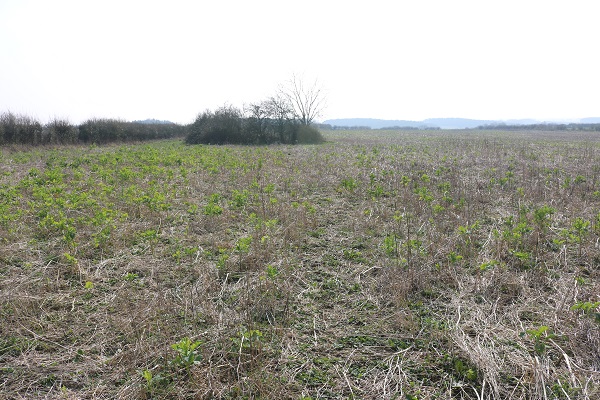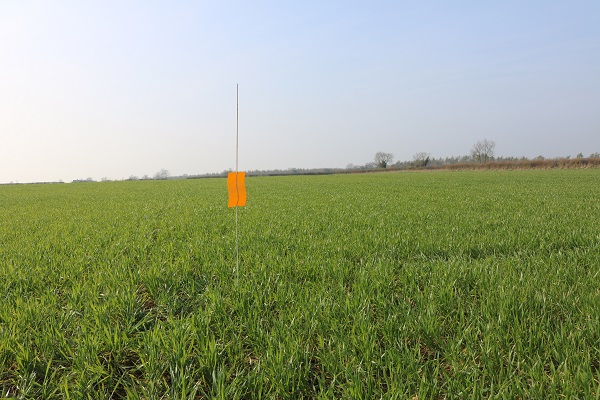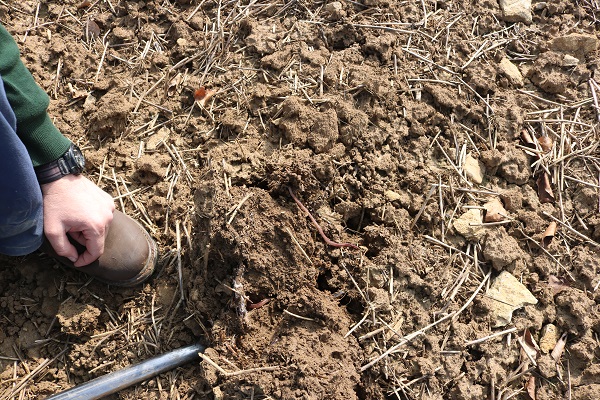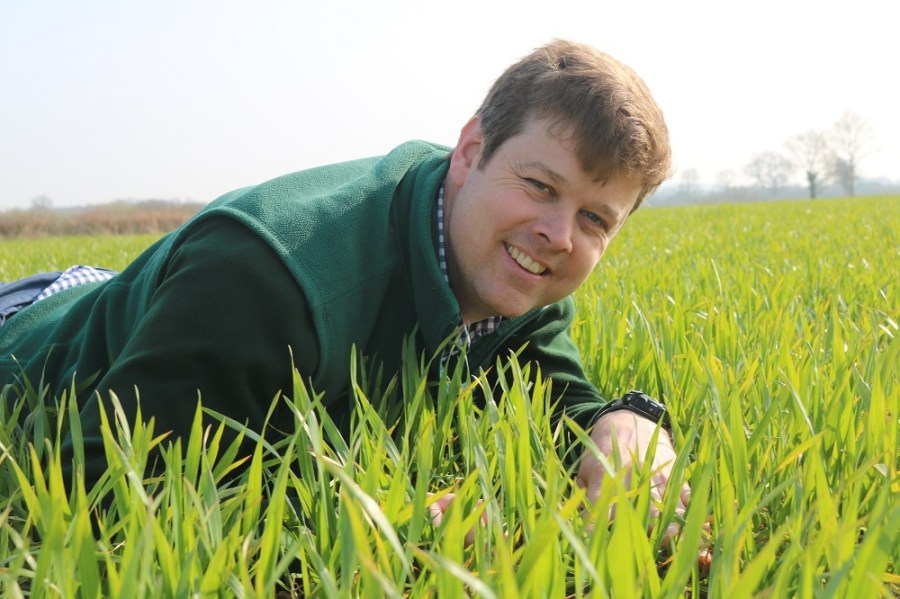On-farm trials on an estate with a 400-year history play a key role in evolving its arable system and bringing in new practices. CPM visits and finds out how the business pins down its cost of production.
This is precisely how you can identify those small changes that will take the farming system forward.
By Tom Allen-Stevens
For many landed estates, profitable farming can sometimes sit uneasily within a wider structure where the focus is on long term sustainability and the priorities for the farming side of the business aren’t always financial.
Charlton Park, on the edge of the Cotswolds near Malmesbury in Wilts, appears to have married the twin aims of long-term sustainability and a year-on-year thriving arable enterprise. It’s been the home of the Earls of Suffolk since that late 16thC, and at its heart, within a beautiful parkland setting, is an impressive Grade one listed mansion.

Now the farm has exited from Entry Level Stewardship wild bird cover will be managed in a way that complements the farming system better.
There are 60 residential and commercial properties, including a business park, managed within the estate that covers 1820ha and hosts an array of rural events and weddings, among which is a music festival. The fabric of the estate reflects its diverse nature – the average field size is 7.2ha, and every one is surrounded by a ditch and/or a hedge, resulting in 150km of each to look after. There are 44ha of 6m margins and a further 20ha of field corners, wild bird cover and 2m buffer strips.
Making this pay, through farming the arable land that’s left, is the responsibility of farm manager Robin Aird. But he doesn’t feel he has a handicap that holds him back from making the most of the land. “It’s a very diverse estate and every day is different,” he says.
“We keep the farm in good heart, but make no mistake, we sweat the assets. We aim to farm without subsidies, to make as much money and to be as lean and efficient as we can.”
The arable assets themselves he describes as “mud” – the soil type varies from gravel to brash to loam to clay, sometimes within the same field. “It’s not good wheat ground – we’re happy with 8.5t/ha, while a good oilseed rape crop yields 3.5t/ha.”

The plan with the Real Results trial is to pitch the farm’s standard fungicide programme against one based on Adexar and Librax.
But the business’ cost of production is just £92/t for cereals, putting it in the top 25% of UK arable farms. What’s more, the farm has just exited from the Entry Level Stewardship scheme – a move Robin Aird feels will have a positive effect on overall profitability. “We’ll keep all the margins, unfarmed field corners and wildlife areas, but we’ll be able to manage them in a way that complements the farming system, rather than being constrained by rules that sometimes conflict.
“We’ve already done the hard part identifying and taking out of production those areas that don’t pay – it’s amazing how profitability increases on the rest as a result,” he adds.
There’s a distinct air of confidence in what he says, but it comes from a solid foundation of being open to change and thoroughly researching any variation in the farming system. “I like to question what I’m doing – it’s fine being ballsy, but you have to back it up.”
And it’s this that’s led him to BASF’s Real Results Circle – a group of 50 growers coming together and sharing results from on-farm trials to find out what really works in the field (see below).

Shallow cultivations and plenty of sewage cake and manure keep the variable soils healthy and thronging with worms.
The trials could help the estate’s arable enterprise on the steady evolution it’s taken since Robin Aird arrived as working farm manager in 2003. “Back then, half the farm was in set aside. We moved to a low-cost min-till system, based on a Grégoire-Besson 4.7m Discordon. We’ve only ploughed 60ha in total since then.”
The same Discordon purchased 13 years ago is still the one used today, although it’s really only the frame that’s original – the wearing parts have been renewed many times and various modifications made. It has nine subsoiler legs at 50cm spacings, but the rear packer’s set so the surface is only scratched, keeping cultivation cost to a minimum.
“That’s also how we’ve kept on top of blackgrass,” explains Robin Aird. “We move the ground as soon as possible behind the combine, keeping surface cultivations shallow, then leave it to weather and for the blackgrass to flush. Good stubble hygiene is the key, then, once the crop is drilled, we’ll delay the pre-emergence herbicide by a week and add in glyphosate to take out any blackgrass that’s emerged.”
Autumn drilling with the 6m Väderstad Rapid doesn’t start until the very end of Sept, and he aims to complete it in 5-6 days. But the cropping itself has also evolved over the years. “It’s a four-year rotation, that in 2003 had two winter wheats alternating with oilseed rape and beans or linseed. We introduced a spring-sown red wheat in some blocks of land to help get on top of blackgrass, but now we’ve moved to what you’d class a ‘northern’ rotation.”
This puts a spring barley after the winter wheat, followed by winter barley, which provides the entry for the oilseed rape. Hybrid variety Bazooka currently outyields wheat at 9t/ha, with the performance on the RGT Planet spring barley an impressive 7t/ha.
“We’ve moved to Clearfield OSR as the biggest problem in the rotation is broadleaf weeds, such as charlock, cleavers and cranesbill, with DK Imperial currently in the ground. On wheat, historically we’ve grown barn-filling feed varieties, but we’re moving to KWS’ Dynamic wheats – Lili and Siskin are managed as feed wheats, but if they attract a premium, I’ll take it,” he says.
He’s tried cover crops, but is “not a big fan”, and believes some of the reported benefits may be over-hyped. “They give you a great flush of blackgrass, but my experience is that they keep the ground too damp – we tried direct drilling after them and the crop was appalling with the weed burden worse than where we’d drilled without cover crops.
“What I have found, however, is that a light pass with the Väderstad Swift in the spring before drilling brings a yield lift of 0.5-1t/ha.”
The same measured approach to improving returns has been taken with phosphate and potash applications. The farm was mapped with soil zones created in the winter of 2011. “We did it ourselves on Gatekeeper software using the principles of Soyl and Courtyard Agriculture. Myself and two of the farm staff with 25 years’ experience helped create the zones and then a local soil scientist who does the sampling fine-tuned it in the field. As a result of the approach we’ve taken, we’ve only applied 20t of bagged P and K in the past 14 years.”
Soil nutrient indices are far from being run down, however. Sewage cake is applied every four years, while chicken manure goes on in front of OSR. “We have K-releasing clays but calcareous soils that drink P for a pastime. Sewage cake is getting more expensive but in terms of value for money, it’s still the outright winner.”
Farmyard manure is brought in under various muck-for-straw deals that have developed over the years, and sampling reveals this is keeping the soil in good health.
The changes to the farming system have also been informed by various on-farm trials. “BASF has been running trials here for the past five years, and what happened in 2012 was a real eye-opener,” recalls Robin Aird.
“The septoria trials were taking place in a field where we’d used a four-spray fungicide programme. Despite that, our part of the field yielded just 3t/ha, but the untreated trials were completely wiped out.”
Since then, he’s taken findings from the trials and introduced them into the farming system to improve returns – Caryx (mepiquat chloride+ metconazole) is now used across the OSR following “impressive” results seen in the on-farm plots, for example.
There’s also been some work on tramline trials with CF Fertilisers, comparing urea with Nitram. “It was a draw in terms of yield, so we’re having another go this year. But in the meantime, I’ve done an analysis of what a move to liquid fertiliser would bring, and it’s something that has very promising prospects.”
The plan with the Real Results trial is to pitch the farm’s standard fungicide programme against one based on Adexar (epoxiconazole+ fluxapyroxad) and Librax (fluxapyroxad+ metconazole) (see table on below). “All trials here are run to make life easy, so this one is located close to the sprayer filling station and the grain store. Nevertheless, sprayer operator Jason Wood isn’t a great fan of trials – he says they make his life a misery!”
Robin Aird runs the grain store himself and will monitor the results as they come over the weighbridge – the plan is to cut the rest of the field, leaving the trial until last. Both tramlines will then be combined when the crop is dry to remove any moisture errors, with the crop put in separate trailers and weighed.
“It is extra hassle, but this is precisely how you can identify those small changes that will take the farming system forward. As for this trial, I’ve got every confidence in my existing fungicide programme and reckon it’s going to win. Having said that, I’m keeping an open mind and I’ll be more than happy to eat my words. Because if the BASF programme comes out on top, I’ll be able to improve my margin, which is what it’s what it’s all about.”
Getting geared up for Real Results
Charlton Park is among 50 farms that have joined the Real Results Circle – an initiative that will allow farmers to conduct their own on-farm trials, backed by BASF.
Two tramlines have been set out in a 13.58ha field of KWS Lili winter wheat, and these will be monitored and assessed throughout the season by ADAS and AgSpace, who are providing technical support.
Precision farming specialists AgSpace will help the estate determine the true yield potential of the site through free satellite mapping. This includes infrared soil brightness scans and early and mid-NDVI maps for crop vigour and leaf greenness. ADAS has developed the trials protocol and will assess the crop, disease pressure and fungicide performance, producing an end-of-season report on the crop.
The trial itself pitches the farm’s standard disease-control programme against one based on Adexar and Librax, with free samples of the Xemium fungicides supplied by BASF (see table below).
Within the 50 farms are five CPM readers whose progress is being closely monitored, with updates provided throughout the season in subsequent issues of CPM and through www.cpm-magazine.co.uk The CPM website’s the place to go for full profiles on the CPM featured farmers, progress reports, Real Results Pioneers features and links to more at www.basfrealresults.co.uk
On the Cambs, Beds and Northants border, Russ McKenzie has a number of variety and OSR plot-size trials, in addition to the Real Results tramline trials in which KWS Siskin is the wheat variety under scrutiny. “The crop looks really decent and has got off to a good start. I’m not expecting much disease, but on-farm trials are the only reliable way to pick out the differences,” he says.




